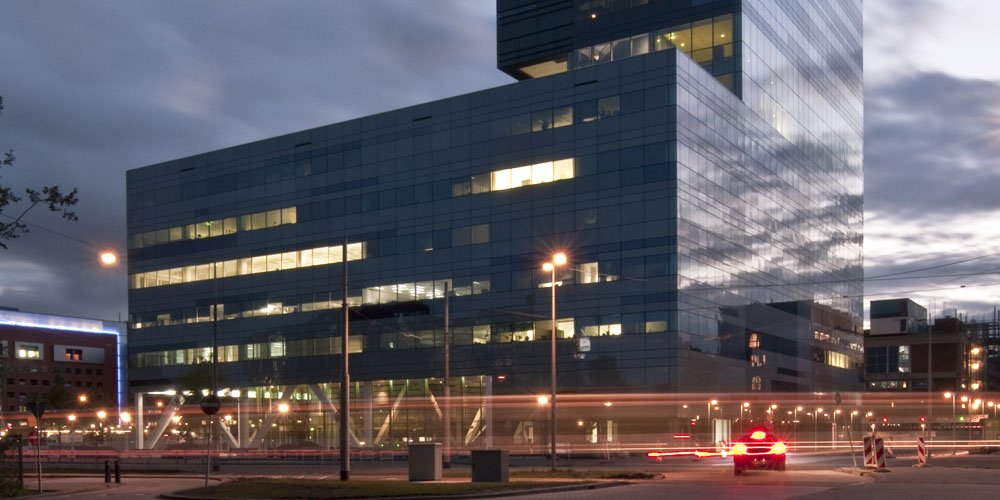Downloads
DOI:
https://doi.org/10.7480/jfde.2013.1-2.644Abstract
Relevance: The value of any intervention in the built environment is most relevant for the stakeholders that are investing in it. For them all costs need to be balanced with benefits - not necessarily directly financial, but adding value to the performance of the accommodated organization. Business cases contain performance criteria like competitive advantage (branding the organization), productivity (optimally supporting users of the building), profitability (on organizational level) and sustainable development (monitoring the ecological footprint). In the changing real estate markets – from supply-driven to demand-driven and with increasingly higher vacancy rates – priorities in decisions about buildings have been shifting.
Purpose: This paper elaborates on how (a) the trends in real estate markets and (b) changing priorities in decision making affect the quality demand for buildings and their facades.
Design/methodology/approach: This paper is based on research of the Real Estate Management chair in general (market analysis, transformation trends, conceptual frameworks) and more specifically on decisions about university campuses in the past 10 years (14 campuses and 57 buildings assessed).
Findings: This paper provides both conceptual frameworks to assess the (added) value of interventions in the built environment for the client and their (changing) priorities in the brief for buildings and their facades.
How to Cite
Published
Issue
Section
License
Copyright (c) 2013 Alexandra den Heijer

This work is licensed under a Creative Commons Attribution 4.0 International License.
Authors or their institutions retain copyright to their publications without restrictions.
References
Blyth, A., & Worthington, J. (2001). Managing the brief - for better design. London, United Kingdom: Spon Press [using Maslov 1954 – hierarchy of needs].
De Jong, P., & Arkesteijn, M. (2013). Life Cycle Costs of Dutch school buildings. Conference paper. ERES 2013. Vienna, Austria.
De Vries, J.C., De Jonge, H., & Van der Voordt, T. J.(2008). Impact of real estate interventions on organisational performance. Journal of Corporate Real Estate, 10(3), 208-223.
Den Heijer, A. (2011). Managing the university campus - Information to support real estate decisions (PhD Thesis/Published Book). Delft, Netherlands: Eburon Academic Publishers.
Den Heijer, A., & Teeuw, P. (2011). Sustainable visions for the campus of the future, at MISBE 2011, Management and Innovation for a Sustainable Built Environment, 20-23 June 2011, Amsterdam, The Netherlands.
Den Heijer, A. & De Jonge, H. (2012). Adding value – linking decisions and performance. In Jensen, P.A., Van der Voordt, T. & Coenen, C. (eds.), FM Added Value Anthology, Lyngby, Denmark: Polyteknisk.
Den Heijer, A., Curvelo Magdaniel, F., & Bentinck, S. (2013). Dutch university campus projects (part 4: 17 projects) - HOI Benchmark 2012-2013 (research report for 14 Dutch universities). Delft, Netherlands: TU Delft.
Estate Management Statistics. (2010). Association of University Directors of Estates (AUDE). Retrieved through AUDE website - http://aude.ac.uk (directly: http://www.hesa.ac.uk).
Heijnders, L. (2013). Vastgoed – problematiek en oplossingsrichtingen (report for The Social and Economic Council of the Netherlands – SER – in Dutch: Sociaal-Economische Raad), Rijksgebouwendienst / TU Delft, 2013.
HEDQF (2012). Higher educational facilities research. Report by Higher Education Design Quality Forum, HEDQF, UK (google: “Out of the Box” AUDE 2012).
Koppels, Ph., & Remøy, H. (2013, forthcoming). The Amsterdam office market, (dataset, maps and preliminary conclusions). Client: Municipality of Amsterdam.
Koppels, P. W., Remøy, H. T. & De Jonge, H. (2009). The economic value of image. In PropertyNL Research Quarterly, 31-38.
Performance in higher education estates. (2006). By Association of University Directors of Estate (AUDE) - Estate Management Statistics (EMS), annual report.
Remøy, H., Koppels, P. & De Jonge, H. (2009). Keeping up Appearance. Real Estate Research Quarterly 8(3), 6.
Remøy, H. (2010). Out of Office - a study on the cause of office vacancy and transformation as a means to cope and prevent. PhD thesis, TU Delft, Faculty of Architecture.
Remøy, H. T. & Wilkinson, S. J. (2012). Office building conversion and sustainable adaptation: a comparative study. Property Management, 30(3), 218-231.
Riccardo, F , Van Oel, C. J., & De Jong, P. (2012). Neighbourhood regeneration by facade redesign: A visual experiment on energy efficiency and aesthetics. The International Journal of Architectonic, Spatial, and Environmental Design, 6(2), 57-80.
Soeter, J. P. (2010). Bouw- en voorraadeconomie 1960-2025. Delft, Netherlands: VSSD.
TNO. (2007). Het effect van ventilatie op de cognitieve prestaties van leerlingen op de basisschool, (The effect of ventilation on the cognitive skills of primary school pupils), Delft, Netherlands: TNO Bouw en Ondergrond.
Van der Schaaf, P. (2002). Public real estate, challenges for governments. Delft, Netherlands: DUP Science.
Wilkinson, S. J., & Remøy, H. (2011). Sustainability and within use office building adaptations: A comparison of Dutch and Australian practices. ERES 2011 Conference Proceedings, Gold Coast Australia, Bond University (January 16-19, 2011).
